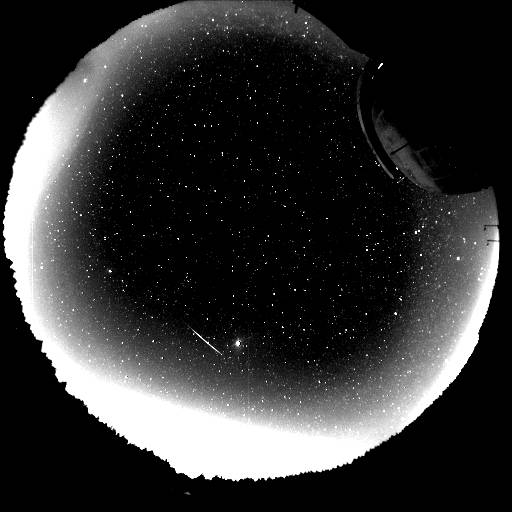The meteoroid seen over the UK on September 21, 2012 has created quite a sensation - make that a several sensations. First, the bright object(s) in the night sky were seen across a wide area by many people, and the brightness and duration - 40 to 60 seconds reported and videoed by some observers - had some experts wondering if the slow moving light-show might have been caused by space junk. But analysis by satellite tracker Marco Langbroek revealed this was likely an Aten asteroid, asteroid which have orbits that often cross the Earth's orbit, but their average distance from the Sun is less than 1 AU, the distance from the Earth to the Sun.
Atens are fairly unusual, making this a rather unique event. But then came another analysis that seemed to be so crazy, it might have been true: this meteoroid may have skipped like a stone in and out of Earth's atmosphere, where it slowed enough to orbit the Earth until appearing as another meteor over Canada, just a few hours after it was seen over the UK and northern Europe.
How amazing that would have been! And there was much speculation about this possibility. But, it turns out, after more details emerged and further investigation ensued, it is not possible that the space rock could have boomeranged around the world and been seen in two different hemispheres.

At first, the time of the fireball sighting over southeastern Canada and northeastern USA was in doubt, but two Canadian all-sky cameras from the Western Meteor Physics Group captured the meteor, providing an accurate time.
"And once I triangulated the location to a spot between Ottawa and Montreal, a linkage to the UK fireball was no longer possible due to the longitude mismatch," Matson said.
Additionally, the 153-minute time difference between meteors places a strict limit on the maximum longitude difference for a "skipping" meteoroid of roughly 38 degrees. This would put the final perigee well off the coast of Newfoundland, south of Greenland, Matson added.
More facts emerged, putting a death knoll on the bouncing, skipping meteoroid theory.
"Independent of the longitude mismatch, triangulation of the Canadian videos revealed that the entry angle was quite steep over Quebec - quite at odds with what an orbiting remnant from a prior encounter would have had," Matson said. "So the meteors are not only unrelated, their respective asteroid sources would have been in different solar orbits."
Another duo of astronomers from the British Astronomical Association, John Mason and Nick James concurred, also noting the steep angle of the UK fireball, in addition to its slow speed. "We get velocities of 7.8 and 8.5 km/s and a height of 62 km ascending," they wrote in the BAA blog. "These velocities and the track orientation and position are not at all consistent with ongoing speculation that there is a connection between this fireball and a fireball seen in south-eastern Canada/north-eastern USA 155 minutes later."
As crazy as the bouncing bolide sounds, it has happened in the past, according to Kelly Beatty at Sky and Telescope, who mentioned at least one instance where a large meteoroid streaked across the sky and then returned to interplanetary space. This sighting took place over the Rocky Mountains in broad daylight on August 10, 1972, and the meteoroid came as close as 35 miles (57 km) above Earth's surface before skipping out into space. Beatty added that its velocity was too fast to become captured and return again.
You can read more analysis of the UK fireball being an Aten asteroid by Phil Plait at Bad Astronomy



Comment: Of course the fireballs seen in the UK were not the exact same as those seen later in the US and Canada... the above analysis misses the point that they could have been fragments coming off the same larger body. Universe Today doth protesteth too much in its effort to pooh-pooh the notion of Tunguska-class bodies passing so close to Earth during these times.